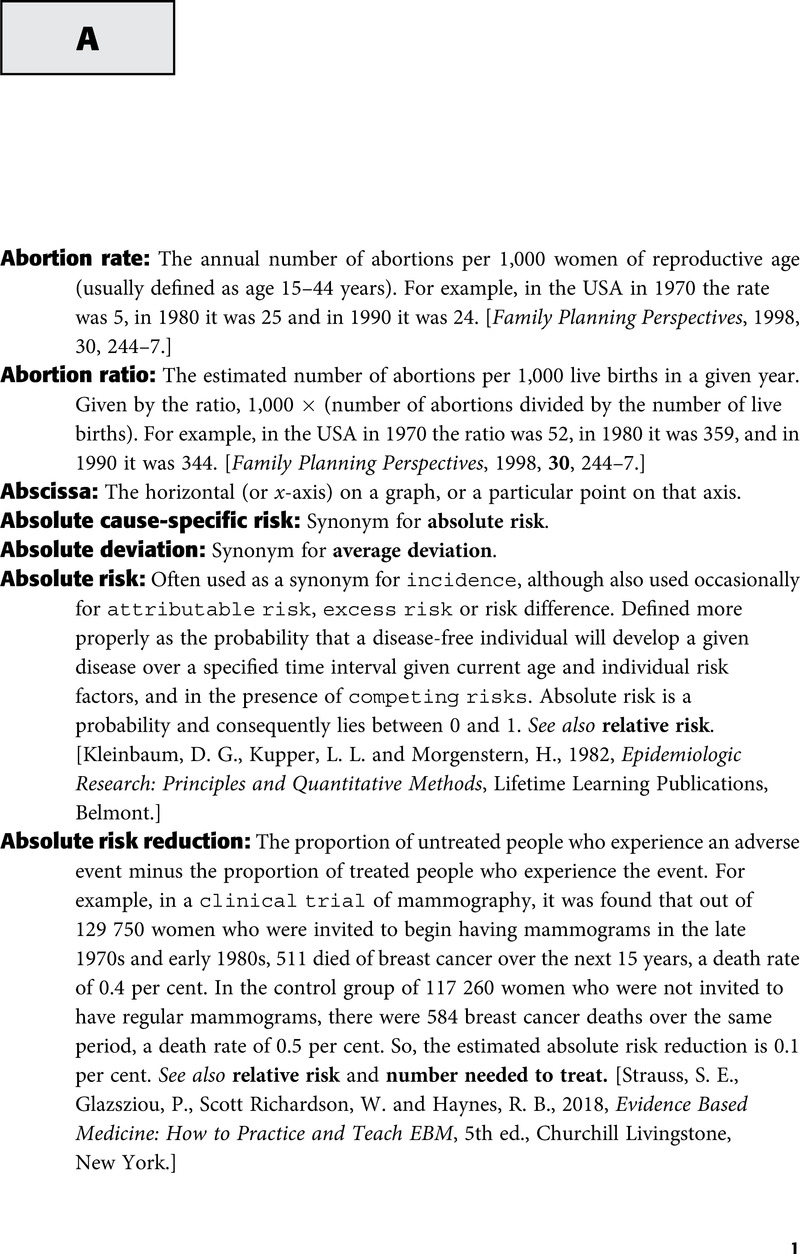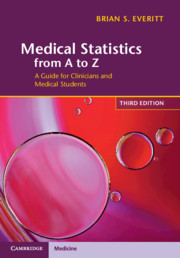A
Published online by Cambridge University Press: 09 April 2021
Summary

- Type
- Chapter
- Information
- Medical Statistics from A to ZA Guide for Clinicians and Medical Students, pp. 1 - 19Publisher: Cambridge University PressPrint publication year: 2021

